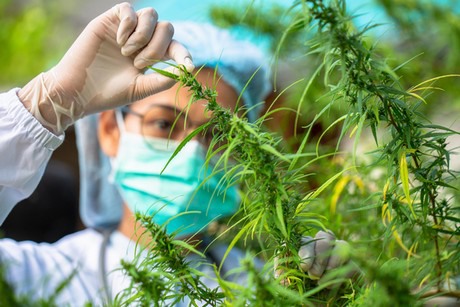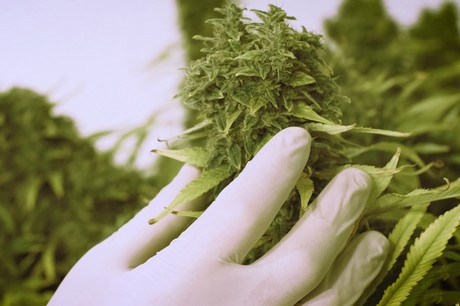There are still many things to uncover about the cannabis plant and how to grow it at its full genetic potential; the research is slowly catching up after years of being hampered by the illicit status of the cannabis plant. Specifically, one of the things that is necessary to better understand is how specific conditions influence the growth of the plant so to steer it in the desired direction. In a recent paper published in Industrial Crops and Products, authors Brandon Yep, Nigel Gale, and Youbin Zheng have explored how a difference in the rootzone can influence the growth of the cannabis plant.
The experiment
To study this aspect, the researchers have compared hydroponic and aquaponic rootzones on two different cannabis genetics and explored how those have influenced the cultivars during the flowering stage. The three tested rootzones, the paper reads, were: an 11-liter pot containing a peat-based growing substrate, top fertigated with a synthetic fertilizer solution (“hydroponic”); an 11-liter pot containing a peat-based growing substrate, top fertigated with aquaculture effluent solution (“aquaculture”); and a 3-liter pot containing a custom made, predominantly peat-based growing substrate, with the lower portion of the roots submerged in a conventional aquaponics deep-water culture system (“aquaponics”).
 © Tinnakorn Jorruang | Dreamstime
© Tinnakorn Jorruang | Dreamstime
Over the course of the experiment, a number of parameters such as plant’s height, branch number, canopy volume, physiological traits, and so on, were measured. At the end of the growing phase, the obtained biomass and mass-based cannabinoid and terpene concentration were verified. The experiment took place at a Southwestern Ontario-based cannabis licensed producer, who had an aquaponics system to grow in an indoor controlled environment.
Takeaways
The results of the experiment showed that, of all three different rootzones, plants performed best in the hydroponic setting, “producing 42-116% greater inflorescence biomass than the other rootzone systems.” At the same time, one cannabis cultivar grown in aquaponics had greater THCA, CBDA, and pinene and limonene terpenes. The researchers state that “Pronounced differences in substrate macro-nutrient availability and foliar nutrient content occurred among the rootzones, suggesting a potential mechanism to explain the observed growth, physiological, yield and potency responses. This work underscores the importance of the rootzone environment for the cultivation of C. sativa, specifically in indoor systems focused on medical or research production.”
 © Luyag2 | Dreamstime
© Luyag2 | Dreamstime
At the same time, some rootzones systems improved cannabinoid concentration, yet reduced general biomass. Thus, as the authors put it, “medical and research cultivators are left with a dilemma – that is, greater potency at the expense of yield.” Therefore, it goes without saying that it is crucial for medical cannabis growers to understand the mechanisms in the rootzone that influence the cannabis secondary metabolites, as these growers have to produce consistent and uniform medicines.
Source: researchgate.net
